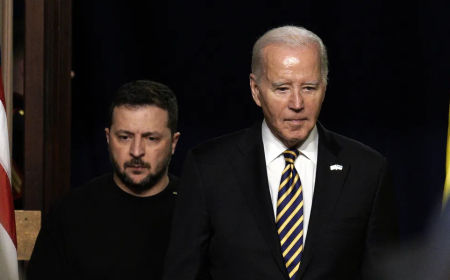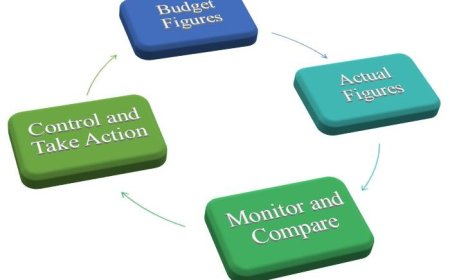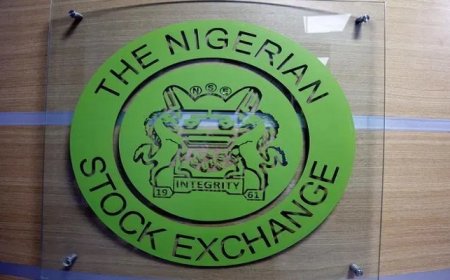Teacher Retention and Shortages: Addressing the Dual Crisis in Education
Explore the causes and consequences of teacher retention and shortages in education, and discover effective strategies for improving teacher satisfaction and stability in the workforce.

Introduction
The education system is undergoing significant challenges in the United States and globally, primarily characterized by teacher shortages and retention issues. These dual crises have far-reaching impacts on educational quality, student outcomes, and the future of teaching as a profession. As schools grapple with increasing demands, the shortage of qualified teachers and high turnover rates threaten to undermine educational progress. This essay explores the causes and consequences of teacher shortages and retention challenges, examines potential solutions, and emphasizes the crucial role teachers play in shaping the future of education.
Causes of Teacher Shortages
The root causes of teacher shortages are multifaceted. Financial constraints often lead to inadequate salaries, which fail to reflect the demanding nature of the profession. Additionally, the rising cost of higher education deters potential candidates from pursuing teaching degrees. Furthermore, the increasing prevalence of standardized testing and accountability measures creates an environment that many educators find stifling, leading to burnout and disillusionment. The lack of support for professional development and mentorship further exacerbates these issues, making it difficult for new teachers to thrive in their roles.
Consequences of High Turnover Rates
The consequences of high turnover rates are profound. Schools that experience frequent staff changes struggle to maintain continuity in instruction, which can disrupt student learning and hinder academic progress. The loss of experienced educators diminishes the overall quality of education, as new teachers may not yet possess the skills or confidence to effectively engage their students. This instability can also affect school culture, leading to diminished morale among both staff and students. Ultimately, these challenges contribute to widening achievement gaps, particularly in underserved communities where the need for effective educators is greatest.
Potential Solutions
Addressing these challenges requires a comprehensive approach. Policymakers must prioritize competitive salaries and benefits to attract and retain talented individuals in the teaching profession. Investing in robust mentorship programs and ongoing professional development can help new teachers navigate the complexities of the classroom, fostering a sense of community and support. Additionally, schools should cultivate an inclusive environment that values teacher input and promotes collaboration among staff.
The Crucial Role of Teachers
Teachers are the backbone of the education system, serving as catalysts for student growth and development. By recognizing the critical role they play and implementing strategies to alleviate shortages and improve retention, we can create a more stable and effective educational landscape. The future of education hinges on our ability to support and empower those who dedicate their lives to nurturing the minds of the next generation.
Understanding Teacher Shortages
Teacher shortages occur when the demand for educators exceeds the available supply of qualified professionals. Various factors contribute to this mounting crisis:
-
Declining Enrollment in Teacher Preparation Programs In recent years, enrollment in higher education programs that prepare future teachers has significantly declined. According to the American Association of Colleges for Teacher Education (AACTE), enrollments in teacher preparation programs fell by 35% between 2009 and 2019. This decline is attributed to a combination of factors, including financial concerns, perceived low job satisfaction, and the appeal of careers in more lucrative fields. As prospective educators weigh their options, the allure of higher salaries and less demanding environments in other industries often overshadows the noble calling of teaching.
-
Increased Workload and Stress Teachers often face escalating workloads from administrative tasks, standardized testing requirements, and other bureaucratic demands. A survey conducted by the National Education Association (NEA) found that over 50% of teachers report feeling overwhelmed by the demands of their job. The stress associated with these responsibilities can lead to burnout, exacerbating retention issues. The emotional toll of navigating large class sizes, diverse student needs, and the pressure to meet performance benchmarks can deter even the most passionate educators from remaining in the profession.
-
Low Salaries and Benefits Compensation for teachers has not kept pace with inflation or the increasing cost of living in many regions. According to the Economic Policy Institute, public school teachers in the U.S. earn approximately 20% less than similarly educated professionals. This salary discrepancy makes it challenging to attract and retain qualified educators, particularly in high-demand subjects such as math, science, and special education. The financial strain can dissuade talented individuals from pursuing teaching careers, further compounding the shortage.
-
Lack of Support and Professional Development New teachers often enter the classroom underprepared for the realities of teaching. Many report feeling inadequately supported, leading to a sense of isolation and frustration. Effective mentorship and continual professional development opportunities are essential for teachers to thrive; however, many districts fail to provide these resources. The absence of structured guidance during the critical early years can lead to high attrition rates, as teachers feel unprepared to handle the complexities of classroom management and curriculum delivery.
Addressing the teacher shortage crisis requires a multifaceted approach, including increased investment in teacher preparation programs, competitive salaries, and robust support systems. By fostering a more supportive and rewarding environment for educators, we can not only attract new talent but also retain the dedicated professionals who are essential to shaping the future of our students and society.
The Consequences of High Teacher Turnover
High turnover rates and teacher shortages have significant implications for students, schools, and the education system as a whole:
-
Impact on Student Achievement Teacher turnover disrupts the learning environment and negatively affects student achievement. Research demonstrates that students benefit from having consistent teachers who contribute to a stable learning atmosphere. Frequent changes in staffing can hinder academic progress and create emotional turmoil for students. This instability can lead to decreased motivation, lower test scores, and an overall decline in educational outcomes. Moreover, the loss of experienced educators means that students miss out on mentorship and guidance, which are crucial for their personal and academic growth.
-
Increased Costs for Schools High turnover rates are costly for school districts. Recruiting and training new educators requires significant financial resources. The Learning Policy Institute estimates that replacing a teacher can cost between $15,000 to $30,000, depending on the level of support provided during training and the overall system's efficiency. These costs extend beyond mere recruitment; they encompass the lost productivity of existing staff who must fill in gaps, the potential decline in student performance, and the institutional knowledge that leaves with departing educators. Consequently, schools may find themselves reallocating funds from essential programs to cover these expenses, ultimately detracting from the quality of education.
-
Teacher Quality and Experience Teacher shortages often lead to emergency hiring practices, resulting in less experienced or underqualified educators entering the classroom. This compromises the overall quality of education and exacerbates issues such as classroom management and student engagement. Inexperienced teachers may struggle to implement effective teaching strategies, leading to a cycle of frustration for both students and faculty. Furthermore, the lack of mentorship opportunities for novice teachers can perpetuate a culture of instability, as these educators may feel unsupported and overwhelmed, prompting them to leave the profession even sooner.
-
Impact on School Culture High teacher turnover also affects school culture and community relationships. A revolving door of educators can erode trust among students, parents, and the community, leading to a perception that the school is not a stable or nurturing environment. This can diminish parental involvement and community investment, both of which are vital for fostering a positive educational atmosphere. Schools with high turnover rates may struggle to build strong relationships with families, resulting in a disconnect that ultimately hinders student success.
The consequences of high teacher turnover extend far beyond individual classrooms, impacting student achievement, financial resources, teacher quality, and overall school culture. Addressing this issue is critical for creating a sustainable and effective education system that meets the needs of all students.
Strategies for Improving Teacher Retention
Addressing the dual issues of teacher retention and shortages requires a multifaceted approach. Several strategies can be implemented at various levels to create a supportive and rewarding environment for educators:
-
Competitive Salaries and Benefits Raising teacher salaries to reflect their essential role in society is crucial for attracting and retaining talent. Ensuring adequate benefits, including health care, retirement options, and support for continuing education, can help make the profession more appealing. Additionally, offering performance-based incentives can motivate educators to excel in their roles, further enhancing their commitment to the profession.
-
Improved Working Conditions Creating positive school climates that prioritize teachers’ well-being is essential. This includes manageable workloads, reasonable class sizes, and sufficient planning time. Schools that foster collaboration among educators and provide administrative support are more likely to retain staff. Furthermore, incorporating wellness programs that focus on mental health and stress management can cultivate a more resilient teaching workforce.
-
Mentorship and Professional Development Providing new teachers with mentorship from experienced educators can ease their transition into the classroom. This relationship not only fosters professional growth but also creates a supportive network that can enhance job satisfaction. Furthermore, offering ongoing professional development opportunities, including workshops, conferences, and online courses, allows teachers to expand their skill sets and stay updated with educational best practices, ultimately leading to increased job satisfaction and retention.
-
Community Engagement Building strong community ties can improve teacher retention. Schools that engage parents and local organizations in the educational process create a sense of belonging for educators. Initiatives that celebrate a school's achievements can foster pride among teachers and strengthen their commitment to the community. By involving teachers in community service projects and local events, schools can enhance their visibility and appreciation within the community.
-
Flexible Work Arrangements Exploring innovative solutions, such as hybrid teaching models or job-sharing opportunities, may help accommodate the diverse needs and personal commitments of teachers. Investing in work-life balance can alleviate stress and burnout. Additionally, allowing teachers to have input in their schedules can lead to greater job satisfaction and a sense of autonomy.
-
Recognition and Appreciation Establishing formal recognition programs to celebrate teachers’ contributions can significantly boost morale. Regularly acknowledging their efforts through awards, shout-outs in school assemblies, or features in newsletters can reinforce their value within the educational ecosystem.
A comprehensive strategy that encompasses competitive compensation, supportive working environments, professional growth opportunities, community involvement, flexible arrangements, and recognition can significantly enhance teacher retention. By prioritizing these areas, educational institutions can cultivate a dedicated and passionate teaching workforce, ultimately benefiting students and the broader community.
Conclusion
The dual crises of teacher shortages and retention pose significant challenges to the education system, with profound implications for student success and the quality of education. Addressing these issues requires a concerted effort from policymakers, school administrators, and communities to create a supportive environment for educators. By prioritizing competitive salaries, improving working conditions, providing mentorship, and fostering community engagement, stakeholders can cultivate a thriving educational ecosystem. Teachers are at the heart of education, and investing in their success is vital for shaping a brighter future for students and society as a whole.
To effectively combat the teacher shortage, it is essential to implement strategic recruitment initiatives that attract diverse talent into the profession. This includes not only financial incentives but also comprehensive pathways for professional development. By establishing robust mentorship programs, novice teachers can receive guidance from experienced educators, fostering a culture of collaboration and continuous improvement. Such initiatives not only enhance teacher retention but also enrich the educational experience for students, as they benefit from the expertise of seasoned professionals.
Furthermore, improving working conditions is paramount. Class sizes should be manageable, and classrooms should be equipped with adequate resources to facilitate effective teaching and learning. By investing in infrastructure and technology, schools can create environments where teachers feel empowered and supported. This, in turn, leads to increased job satisfaction and a greater likelihood of retention.
Community engagement also plays a critical role in addressing these challenges. Schools should actively involve parents, local businesses, and community organizations in the educational process. By fostering strong partnerships, communities can provide additional support for teachers, whether through volunteer programs, funding for classroom projects, or hosting events that celebrate the teaching profession. Such initiatives not only enhance the school’s resources but also create a sense of belonging and appreciation for educators.
Ultimately, the commitment to reversing the trends of teacher shortages and high turnover must be sustained and multifaceted. Policymakers must recognize that the investment in teachers is an investment in the future of society. A well-supported teaching workforce is essential for cultivating critical thinkers, innovators, and responsible citizens. By prioritizing the needs of educators, we can create a resilient education system that not only meets the demands of today but also prepares students to thrive in an increasingly complex world. In doing so, we can ensure that every child has access to the quality education they deserve, paving the way for a more prosperous and equitable society.
What's Your Reaction?
 Like
0
Like
0
 Dislike
0
Dislike
0
 Love
0
Love
0
 Funny
0
Funny
0
 Angry
0
Angry
0
 Sad
0
Sad
0
 Wow
0
Wow
0






































